| Lone Sloane | |
|---|---|
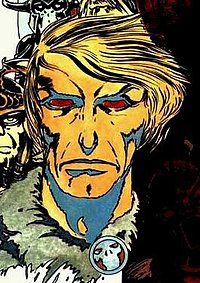 | |
| Publication information | |
| First appearance | Le Mystère des Abîmes (1966) |
| Created by | Philippe Druillet |
Lone Sloane is a science fiction comics character created in 1966 by the French cartoonist Philippe Druillet.
| Lone Sloane | |
|---|---|
 | |
| Publication information | |
| First appearance | Le Mystère des Abîmes (1966) |
| Created by | Philippe Druillet |
Lone Sloane is a science fiction comics character created in 1966 by the French cartoonist Philippe Druillet.
Lone Sloane first appeared in Druillet's own debut, Mystère des Abîmes, published in 1966. Other stories were published in the Franco-Belgian comics magazine Pilote from February 1970 to April 1971. The series was subsequently revamped by the author for Metal Hurlant magazine.
Set 800 years after a catastrophic event called the "Great Fear", the stories feature Lone Sloane, who is caught by an entity called "He Who Seeks", after his space ship is destroyed. He is thrown into a different dimension, where he becomes a space rogue and freebooter with strange powers, and finds himself caught in an intergalactic struggle between space pirates, gigantic robots, dark gods, and other-dimensional entities. Very similar to Silver Surfer and Galactus, or Ulysses and the Greek gods, he is compelled to wander in a universe that is alien to him. It is also known for the quasi-baroque style of Druillet's artwork, which features Lovecraftian space nightmares mixed with Escherian mathematically inspired worlds.
The first eight stories were translated into English by Jean-Marc Lofficier and Randy Lofficier. They were first serialized in black and white in Dark Horse's Cheval Noir comics anthology, then published as graphic novels by NBM Publishing. The rest of the stories have been translated into English by the magazine Heavy Metal, some of them serialized in the magazine (Gail in 1977 and 1978, Salammbo in 1980 and 1981) and Chaos published as an album.
Bandes dessinées, abbreviated BDs and also referred to as Franco-Belgian comics, are comics that are usually originally in French and created for readership in France and Belgium. These countries have a long tradition in comics, separate from that of English-language comics. Belgium is a mostly bilingual country, and comics originally in Dutch are culturally a part of the world of bandes dessinées; these are translated to French and concurrently sold to the French-reading audience and vice versa.

Enki Bilal is a French comic book creator, comics artist and film director.
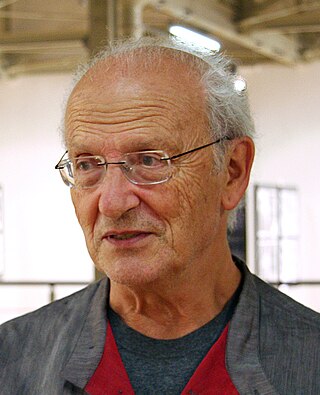
Jean Henri Gaston Giraud was a French artist, cartoonist and writer who worked in the Franco-Belgian bandes dessinées (BD) tradition. Giraud garnered worldwide acclaim predominantly under the pseudonym Mœbius for his fantasy/science-fiction work, and to a slightly lesser extent as Gir, which he used for the Blueberry series and his other Western themed work, particularly valued in continental Europe. Esteemed by Federico Fellini, Stan Lee, and Hayao Miyazaki, among others, he has been described as the most influential bande dessinée artist after Hergé.
Publication of comic strips and comic books focusing on science fiction became increasingly common during the early 1930s in newspapers published in the United States. They have since spread to many countries around the world.

Valérian and Laureline, originally titled Valérian: Spatio-Temporal Agent and also commonly known as Valérian, is a French science fiction comics series, created by writer Pierre Christin and artist Jean-Claude Mézières. It was first published in Pilote magazine in 1967; the final installment was published in 2010. All of the Valérian stories have been collected in comic album format, comprising some twenty-one volumes plus a short story collection and an encyclopaedia.

Métal hurlant is a French comics anthology of science fiction and horror comics stories. Originally created in 1974, the anthologies ceased publication in 1987, but revived between 2002 and 2004 in multilingual editions, and then again in 2020.

The Incal is a French graphic novel series written by Alejandro Jodorowsky and originally illustrated by Jean Giraud. The Incal, with first pages originally released as Une aventure de John Difool in Métal hurlant and published by Les Humanoïdes Associés, introduced Jodorowsky's "Jodoverse", a fictional universe in which his science fiction comics take place. It is an epic space opera blending fantastical intergalactic voyage, science, technology, political intrigues, conspiracies, messianism, mysticism, poetry, debauchery, love stories, and satire. The Incal includes and expands the concepts and artwork from the abandoned film project Dune directed by Jodorowsky and designed by Giraud from the early 1970s.

The Airtight Garage is a lengthy comic strip work by the artist and writer Moebius. It first appeared in discrete two-to-four-page episodes, in issues 6 through 41 of the Franco-Belgian comics magazine Métal Hurlant from 1976 to 1979, and later in the American version of the same magazine, Heavy Metal, starting in 1977. It was subsequently collected as a graphic novel in various editions.

Pilote was a French comic magazine published from 1959 to 1989. Showcasing most of the major French or Belgian comics talents of its day the magazine introduced major series such as Astérix, Barbe-Rouge, Blueberry, Achille Talon, and Valérian et Laureline. Major comics writers like René Goscinny, Jean-Michel Charlier, Greg, Pierre Christin and Jacques Lob were featured in the magazine, as were artists such as Jijé, Morris, Albert Uderzo, Jean (Mœbius) Giraud, Enki Bilal, Jean-Claude Mézières, Jacques Tardi, Philippe Druillet, Marcel Gotlib, Alexis, and Annie Goetzinger.
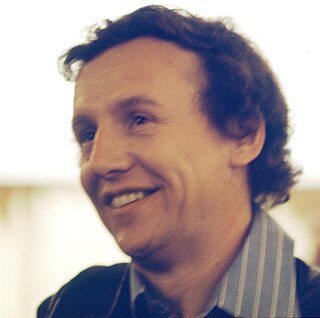
Jean-Claude Mézières was a French bandes dessinées artist and illustrator. Born in Paris and raised in nearby Saint-Mandé, he was introduced to drawing by his elder brother and influenced by comics artists such as Hergé, Andre Franquin and Morris and later by Jijé and Jack Davis. Educated at the École nationale supérieure des arts appliqués et des métiers d'art, he worked upon graduation as an illustrator for books and magazines as well as in advertising. A lifelong interest in the Wild West led him to travel to the United States in 1965 in search of adventure as a cowboy, an experience that would prove influential on his later work.

Philippe Druillet is a French comics artist and creator, and an innovator in visual design.
Les Humanoïdes Associés is a Franco-American publishing house specializing in comics and graphic novels, founded in December 1974 by comic artists Mœbius, Jean-Pierre Dionnet, Philippe Druillet, and financial director Bernard Farkas with the goal to publish the magazine Métal Hurlant,which focused on science fiction. It later expanded to include works from across comic book genres. Considered revolutionary in the comic book form at the time, chiefly due to its focus on the science fiction genre, the work found in Humanoïdes inspired many generations of authors and filmmakers.
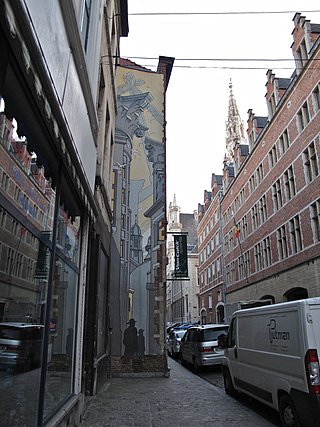
The Obscure Cities, first published in English as, variously, Stories of the Fantastic and Cities of the Fantastic, is a bande dessinée series created by Belgian artist François Schuiten and French writer Benoît Peeters. First serialized in magazine format in 1982, the series has been published in album format by Brussels-based publisher Casterman since 1983. New installments of the series were published throughout the 1980s, 1990s, and 2000s, in varying formats, including full-color, partial color, greyscale, and black-and-white comic illustration, as well as photo comic, picture book, and multimedia formats. The series is distinguished by Schuiten's realistic rendering of diverse contemporary, historical, and imaginary architectural styles.
The Long Tomorrow is the title of a science fiction comics short story serialized in two segments in the French magazine Metal Hurlant in 1976. It was written by Dan O'Bannon, and illustrated by Moebius. It is noted for its influential visual design, which inspired the designs of feature films including Blade Runner, Tron, Alien, and The Abyss. The story was reprinted in Moebius Book Four.
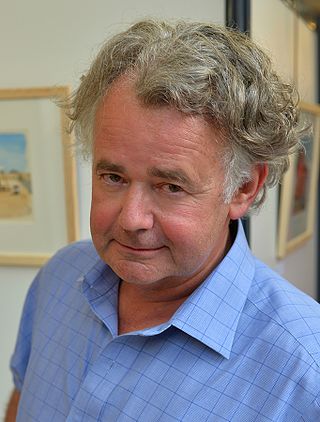
Jacques de Loustal is a French comics artist who uses a painterly style reminiscent of David Hockney.

Jean-Marc Lofficier is a French author of books about films and television programs, as well as numerous comics and translations of a number of animation screenplays. He usually collaborates with his wife, Randy Lofficier, and the reason why credits sometimes read "R.J.M. Lofficier", after the initials of both spouses.

Caza, the pseudonym of Philippe Cazaumayou, is a French comics artist.
Rork is a series of eight graphic novels by German comic author Andreas. It is also the name of the protagonist of the series.
Jacques Lob was a French comic book creator, known for several comics creations, including Superdupont.
Notable events of 1966 in comics. See also List of years in comics.